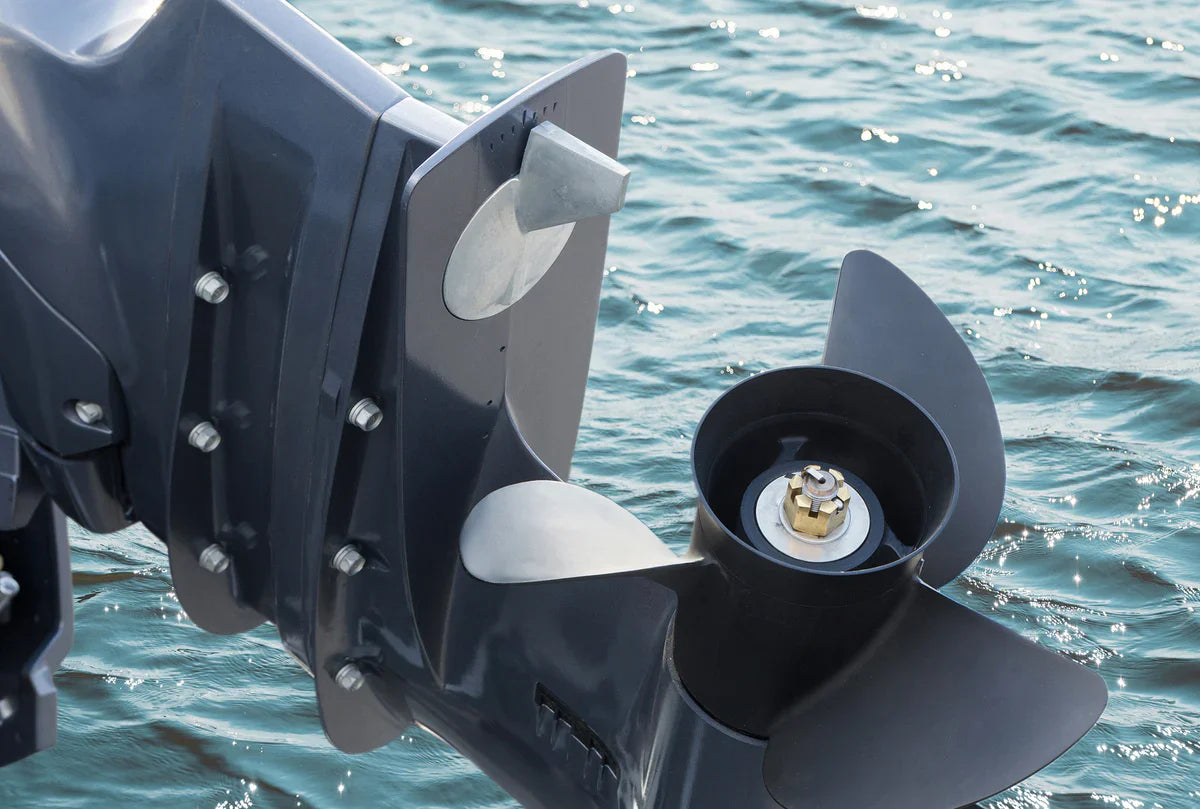Need to install a trim tab anode on your Yamaha outboard motor?
Often called trim tab "zincs," these small but essential components are easy to replace and can be installed in just a few minutes.
Before diving into the step-by-step process, it’s helpful to understand the role of a trim tab anode and how it affects your Yamaha outboard motor’s performance. By learning the basics of alignment and installation, you’ll not only simplify the process but also be better equipped to troubleshoot any future issues with your Yamaha outboard.
What Does a Trim Tab Anode Do on an Outboard Motor?
So, what functions does a Yamaha outboard trim tab zinc anode perform for your boat?
Steering

Trim tabs are essential for steering your boat safely and accurately. When properly aligned, trim tab anodes counteract torque pressure generated by the propeller for steering and helps even out “prop-walk,” a propeller's tendency to rotate about a vertical axis. That’s why it’s called a “trim” tab, enabling a more stable ride that offsets unwanted torque. Trim tabs are often set at an offset angle for this purpose - aligned right for right-turning outboard motors and left for left-turning outboard engines. Most Yamaha outboards have a series of hash marks by the trim tab that indicate the offset needed for accurate steering.
Counteracts Corrosion
There are three types of corrosion boaters typically experience:
- Simple electrochemical corrosion
- Galvanic corrosion
- Electrolytic/stray current corrosion
Trim tab anodes absorb these types of corrosion more readily than other engine components, so they serve as a protective barrier to save more expensive and harder-to-repair parts.
Over time, these anodes—typically made of cheap zinc materials—will degrade and need to be replaced. As the material degrades, it begins to lose some of its steering abilities and its ability to attract corrosion. While simply cleaning it with a wire brush will restore it for minor damage, replacement is necessary when corroded to approximately half of its original size. This is why they are referred to as sacrificial anodes—the anode sacrifices itself to protect your engine and its components.
Checking your trim tab anode(s) (and other anodes, for that matter) should be done minimally as part of your annual or 100-hour service.
Other Types of Outboard Anodes
Bear in mind that there are several other types of anodes also located in your Yamaha outboard motor. Depending on your model, your Yamaha outboard may have:
- Lower plate/bracket anodes
- Button anodes
- Internal anodes
While these anodes serve the same anti-corrosion function of the trim tab anode, their function does not affect steering. Replacement is a bit different than trim tab anodes - for example, internal anodes require taking off the engine cover to access them and may only need a light brushing if minor corrosion has occurred.
How to Install a Trim Tab Anode
Now that you understand why trim tab anodes are important for your boat and outboard motor, let’s learn how to install trim tab anode on Yamaha outboards:
- First, identify where the trim tab anode on your Yamaha outboard is. It is typically located above the propeller on the anti-cavitation plate.
- Next, locate and remove the trim tab plug located directly above the trim tab.
- In the cavity, you will insert a socket wrench with an extension to access the bolt securing the trim tab. Most Yamaha trim tabs use a ½” socket wrench.
- Make a note of the hash marks by the trim tab, which indicates how many degrees they will be offset. Use a piece of masking tape if you have to remember the location so you won’t have to adjust it after installation.
- Slowly turn the bolt counterclockwise to loosen the trim tab until it loosens.
- Insert the new trim tab anode. Replacement is the opposite of installation.
That’s the entire process for replacing a trim tab on a Yamaha outboard motor. Simple!
Adjusting the Trim Tab Anode
Now that you’ve learned how to install a trim tab anode on your Yamaha outboard, adjusting it is a quick and straightforward process. Simply loosen the retaining bolt and use the hash marks as a guide to make precise adjustments.
If your boat pulls to the starboard side, adjust the trim tab slightly to the right; if it pulls to the port side, adjust it to the left. Be sure to make adjustments in small, one-click increments to avoid overcorrecting. Lastly, double-check that the trim tab anode is securely tightened, as a loose tab can shift out of alignment during operation.
What is the Best Anode for Freshwater?
The best anode for freshwater is made from magnesium. While aluminum and zinc are cheaper alternatives, serving as “catch-all” materials, magnesium helps prevent “potential reversal” at elevated temperatures commonly found in freshwaters. This means that materials besides magnesium may actually draw in unwanted corrosion and electrolysis, especially in marinas where boaters use land power.
Therefore, if you are looking to take your boat out from saltwater to freshwater, it may be wise to perform a Yamaha outboard anode replacement with magnesium anodes.
* * *
Now that you understand the purpose of trim tab anodes and how to replace them, it's time to find the right parts! THe correct anodes for your specific engine can be found at PartsVu.com. You'll be back in the water in no time.
This content was designed to serve as a general guide. Persons who are not familiar with marine engine repair and who have not been trained in the recommended servicing or installation procedures should have the work performed by an authorized marine mechanic. Improper installation or servicing of parts can result in engine or boat damage, personal injury to the installer, or harm to persons operating the product.


1 comment
How to adjust steering skeg on f70
———
Yamaha Outboard Maintenance replied:
Hi Del, Thanks for your question! On the Yamaha F70, what you’re referring to is likely the steering friction adjuster or the trim tab (also known as the steering skeg or anode fin) located just above the propeller. Here’s how to adjust it, depending on what you meant:
1. Trim Tab / Anode Fin Adjustment (to correct steering pull): This fin helps offset the natural steering pull caused by engine torque.
Locate the trim tab above the prop. * Loosen the bolt holding it in place. * If your boat pulls to the right, move the rear of the tab slightly to the right (clockwise). * If your boat pulls to the left, move it slightly to the left (counter-clockwise). * Retighten the bolt and test—adjust further as needed.2. Steering Friction Adjustment (for tiller handle models): This is a knob usually located under the tiller handle that increases or decreases steering resistance.
Turn clockwise to tighten (more resistance). * Turn counterclockwise to loosen (less resistance).Please keep in mind that we’re not certified mechanics, and this advice is general guidance. If you’re unsure about the adjustments or don’t feel comfortable doing them yourself, it’s always best to have a qualified marine technician take a look to ensure everything is set correctly and safely.
Best Regards Markine